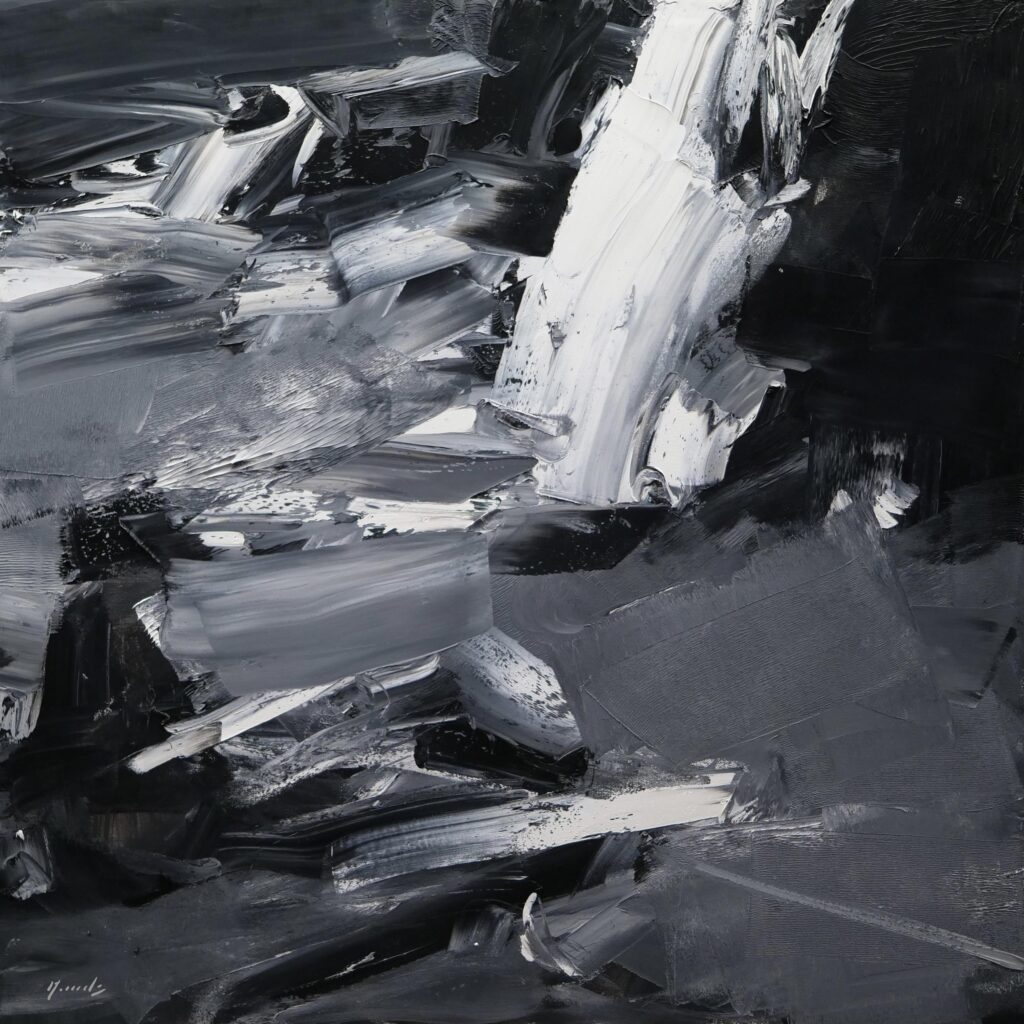Perhaps it was his studies in interdisciplinary art or his fearless approach to experimentation––or both––that led Anton Nowels to his unique representational abstraction style. Either way, he believes unplanned outcomes breed originality.
Though he may leave the outcomes to chance, Anton still approaches experimentation very methodically. He has a process and is strategic in his rule breaking. Part of that strategy involved first learning the rules––the fundamentals of composition and painting––then figuring out where he could bring in experimentation and how to fold all that back into fine art.
Today, with oil as his chosen medium, Anton eloquently paints contemporary impressionism works often depicting Western landscapes, from oceanside cliffs to desert canyons––toeing the line between abstraction and impressionism.
Anton is also an instructor at the Scottsdale Artists’ School and is a Signature Member of the American Impressionist Society (AIS) and a Signature Member of the Oil Painters of America (OPA).
What inspired you to pursue art as a career?
I didn’t plan on being an artist per se. It evolved over time. In college, I was in a life drawing class, and at the time, I had no clue what drawing or painting really was all about. I thought I was just going to paint some cactus. But I soon realized how interesting figure drawing was. Then I got “The Natural Way to Draw” by Kimon Nicolaides and continued to work on the fundamentals. I continued to follow my interests, which led to more art classes and eventually a degree in interdisciplinary arts and performance from Arizona State University.
What led you to choose oil as your medium?
With oil painting––and painting in general––there’s a physicality to it that I really like. With oil specifically, I like the body of the paint and how it moves. I paint to move and feel and let emotions go. Those come out in the paint and in the brushstrokes, which is why I don’t paint in really tight detail. I like the movement.
Oil paint lends itself to being very thick and sculptural to also being very thin like watercolor––and that’s the range I like to play in.
What do you find most rewarding about your work?
I think everyone wants to say something in life and I feel like while I’ve said some meaningful things, there’s still more I have to say. And that’s what I find most rewarding about this work––it gives me a voice and a channel.
What most challenges you about your work?
One challenge I have now with painting in representational abstraction––straddling abstraction and impressionist work––is knowing when to move and when to be restrained. There are points where I can really let go and others where I pull back to arrange color or design the painting and reflect. Then I can let myself go again in whatever direction that might be.
Some paintings may feel like they’re screaming really loud and others are more quiet and restrained. It’s just letting the painting dictate the direction.
How do you experiment with different painting techniques? What does that look like?
I went to school for interdisciplinary art, which is very experimental––you take whatever and make art out of it. But for me, the experimentation part of it is this idea that you arrive at an original painting through chance and experimentation. It’s the idea that originality comes out of, “I’m not going to know the outcome, and if I did, it wouldn’t be original. It would be prefabricated.” By leaving things to chance, you have unexpected results.
It took me years to apply that to fine art. First, I had to learn the structure of painting––between light and shadow, warm and cool color, etc. Once I had the fundamentals of how a painting is composed, I could find areas to bring in experimental tools to play with the process.
So, experimentation, for me, is first about understanding the structure of the painting, selecting experimental tools, then using the chance to offer up an unexpected outcome, and then building that back into the painting.
What drew you to the Celebration of Fine Art?
I’ve been to the show before and really enjoyed it. But then a couple of things randomly came together around the same time and I took it as a sign. Through Anna Akridge, the arts program specialist at the Mayo Clinic where I have an installation, I met long-time Celebration of Fine Art artist Heidi Rosner. We became fast friends and she piqued my interest in the show. Then I learned my friend and fellow artist Jerry Salinas was applying. So I decided to go for it. And I’m really looking forward to curating my space and connecting with people.






